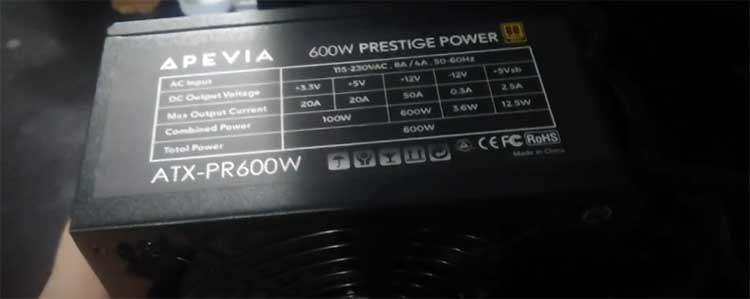As a smartphone user, I’ve always been on the hunt for the perfect case to protect my device from life’s inevitable drops, bumps, and mishaps. I’ve dropped my phone more times than I’d like to admit—once even onto a concrete parking lot during a rushed morning!
That’s why I’m comparing two heavyweights in the phone case world: the Otterbox Defender and the Spigen Tough Armor. My goal here is to break down their features, weigh their pros and cons, and help you decide which case suits your lifestyle best.
Let’s get started with a quick comparison table to set the stage!
A Brief Comparison Table
| Feature | Otterbox Defender | Spigen Tough Armor |
| Protection Level | Extreme: Multi-layer, rugged design | Robust: Dual-layer with air cushion tech |
| Layers | 3 (Polycarbonate, rubber, silicone) | 2 (TPU, polycarbonate) |
| Built-in Screen Protector | Yes (some models) | No, but raised edges for screen safety |
| Port Covers | Yes, blocks dust and dirt | No, open ports for easy access |
| Weight & Bulk | Heavier, bulkier for max protection | Lighter, slimmer for balanced use |
| Grip | Grippy edges, can be slippery on back | Textured back for enhanced grip |
| Extras | Belt clip holster doubles as stand | Built-in kickstand for hands-free viewing |
| Wireless Charging | May interfere (varies by model) | Generally compatible |
| Price (Approx.) | $50-$70, premium investment | $25-$40, budget-friendly |
| Best For | Rugged adventurers, clumsy users | Everyday users, style-conscious folks |
This table gives you a snapshot, but I’ve got plenty more to share from my perspective as a real user. Let’s explore these cases and see how they hold up in real life!
My Journey With Phone Cases
I’ll be honest—my relationship with phone cases has been a rollercoaster. I’ve gone through cheap, flimsy ones that cracked on the first drop, and I’ve tried sleek, stylish ones that left my phone vulnerable. After one too many screen repairs, I decided to focus on protection.
That’s when I turned to the Otterbox Defender and Spigen Tough Armor, two cases known for their durability. I’ve used both, dropped my phone with both, and even tossed them into my backpack for hiking trips.
Here’s what I’ve learned about their key features, strengths, and weaknesses.
Key Features of The Otterbox Defender
The Otterbox Defender has been my go-to when I know life’s about to get rough. Here’s what stands out:
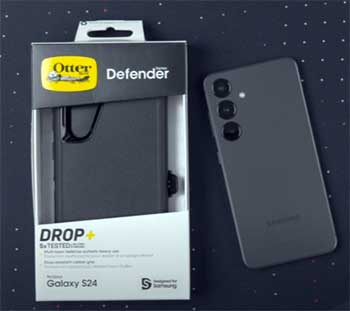
- Multi-Layer Construction: This case is like a fortress for your phone. It combines a hard polycarbonate inner shell, a shock-absorbing rubber layer, and a silicone outer slipcover. I’ve dropped my phone from waist height onto tile, and it came out unscathed.
- Built-in Screen Protector: Some models include this feature, and I love the peace of mind it brings. My screen stays safe from scratches and cracks, especially when I’m clumsy on a busy day.
- Port Covers: Dust and dirt? No problem. The Defender’s silicone flaps seal off charging ports and headphone jacks. I’ve taken it hiking, and no grit got inside.
- Belt Clip Holster: This doubles as a stand, which I’ve used for watching videos hands-free while cooking or camping. It’s a rugged bonus I didn’t expect to love so much.
- Military-Grade Protection: Tested to MIL-STD-810G standards, this case is built for extreme drops. I feel confident knowing my phone can survive a tumble down the stairs.
Pros of The Otterbox Defender
Here’s why I’ve leaned on the Defender in tough situations:
- Unmatched Protection: If you’re like me and prone to dropping your phone—or you work in construction, hike rugged trails, or chase kids around—this case is a lifesaver. It’s taken drops from over 10 feet and kept my device intact.
- Dust and Dirt Resistance: Those port covers are a game-changer. I’ve used this case in dusty environments, like a weekend at the beach, and my ports stayed clean.
- Screen Safety: The built-in screen protector (on select models) means I don’t need to buy a separate one. It’s a small but appreciated touch.
- Durable Design: The materials feel tough and long-lasting. I’ve had mine for over a year, and it’s still going strong, no peeling or cracking.
- Holster Versatility: The belt clip isn’t just for clipping to your pants—it’s a sturdy stand for video calls or watching tutorials while I fix something.
Cons of The Otterbox Defender
No case is perfect, and here’s where the Defender has tripped me up:
- Bulk and Weight: This thing is heavy. It adds noticeable thickness, making my phone feel like a brick. It barely fits in my pocket, and I’ve struggled to use it with car mounts.
- Button Stiffness: The covers over the buttons require a hard press. I’ve fumbled to adjust volume quickly during calls, and it’s frustrating.
- Wireless Charging Issues: Some models interfere with wireless charging. I’ve had to remove the case to charge, which defeats the purpose of constant protection.
- Higher Price: At $50-$70, it’s a premium investment. I’ve wondered if I’m paying for the brand as much as the protection.
- Slippery Back: Despite grippy edges, the back can be smooth. I’ve nearly dropped it when my hands were sweaty or wet.
Key Features of The Spigen Tough Armor
Now, let’s switch gears to the Spigen Tough Armor. I’ve used this case for everyday life—work, errands, and casual outings—and it’s impressed me. Here’s what I’ve noticed:
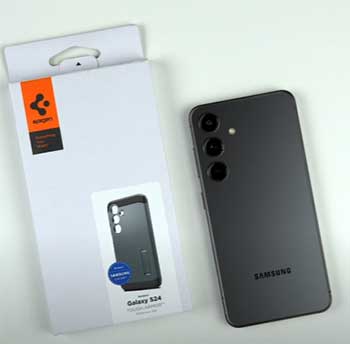
- Dual-Layer Design: It combines a flexible TPU layer with a hard polycarbonate shell. I’ve dropped my phone from my desk, and the shock absorption saved the day.
- Air Cushion Technology: Spigen’s signature feature puts air pockets in the corners to disperse impact. I’ve tested this with a few accidental drops, and my phone’s been fine.
- Built-in Kickstand: This is a gem! I’ve propped my phone up to watch shows while eating breakfast or to follow a recipe hands-free.
- Raised Edges: No built-in screen protector, but the lips around the screen and camera keep them safe. I’ve laid my phone face down without a scratch.
- Sleek Profile: It’s slimmer than the Defender, and Amanda, and I love how it balances protection and style without feeling bulky.
Pros of The Spigen Tough Armor
Here’s what I’ve loved about the Tough Armor:
- Solid Protection: The dual-layer setup and air cushion tech handle drops well. I’ve tested it from waist height onto hardwood, and my phone survived without a dent.
- Slimmer Design: It’s less bulky than the Defender, fitting easily in my pocket or bag. I appreciate not feeling weighed down.
- Enhanced Grip: The textured back gives me a secure hold. I’ve felt confident even with sweaty hands after a workout.
- Kickstand Convenience: Perfect for hands-free viewing. I’ve used it for video calls, movies, and even reading articles while multitasking.
- Budget-Friendly: At $25-$40, it’s a steal for the protection and features. I feel like I’m getting great value.
- Wireless Charging Compatibility: No need to remove the case to charge wirelessly. I’ve used it with my charger, and it works seamlessly.
Cons of The Spigen Tough Armor
Here’s where the Tough Armor has let me down at times:
- No Built-in Screen Protector: I had to buy a separate one, which adds cost and hassle. The raised edges help, but it’s not the same.
- Open Ports: No covers mean dust and debris can sneak in. I noticed some grit after a day at the park.
- Less Extreme Protection: It’s solid for everyday drops, but I’m not sure I’d trust it for a 10-foot fall or rugged outdoor use.
- Kickstand Durability: Mine started to loosen after months of use. It still works, but I worry about long-term reliability.
- Limited Color Options: Fewer styles than I’d like. I’ve stuck with black, but I wish there were more fun choices.
Also Read: Is Ailun Screen Protector Worth It?
Key Differences Between Otterbox Defender And Spigen Tough Armor
- Design and Build Quality
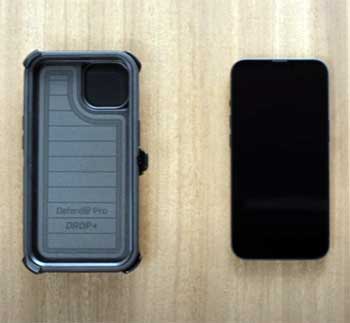
The Otterbox Defender is a tank. Its three-layer setup—polycarbonate, rubber, and silicone—feels like it could survive anything.
I’ve carried it on hikes, and the port covers kept sand out of my charging port. But it’s bulky.
My hands got tired holding it for long, and it didn’t always play nice with wireless chargers.
The Spigen Tough Armor, by contrast, feels sleek and modern.
The TPU and polycarbonate combo is lighter, and the textured back gives me a confident grip.
I love the kickstand for propping it up at my desk.
It’s not as rugged, but it’s perfect for my less chaotic days.
- Protection Capabilities: What I’ve Tested
Protection is why I buy these cases. The Otterbox Defender’s military-grade rating (MIL-STD-810G) gives me confidence. I’ve dropped it from a ladder—about 10 feet—and my phone was fine. The built-in screen protector (on some models) and port covers add extra security.
The Spigen Tough Armor’s air cushion technology has handled my clumsy moments, like dropping it from my car seat to the pavement. It’s not as extreme, but for everyday use, it’s been reliable. If I worked in construction or dropped my phone constantly, I’d pick the Defender.
For my usual mix of errands and occasional mishaps, the Tough Armor holds up.
- Functionality and User Experience
Functionality matters to me. The Otterbox Defender’s holster is a surprise win—I clip it to my belt on hikes or use it as a stand for videos. But the stiff buttons frustrate me; I’ve missed calls fumbling to silence the ringer.
The Spigen Tough Armor’s kickstand is a dream for watching tutorials while I cook. Its buttons are responsive, and wireless charging works without a hitch.
The open ports are convenient but let dust in, which I’ve had to clean out after beach trips. Both cases work, but the Tough Armor feels smoother for daily use.
- Style and Personalization
I care about looks, too. The Otterbox Defender is utilitarian—rugged but not stylish. Some models have textured backs, but color options are limited, and it hides my phone’s sleek design. I’ve stuck with black or camo.
The Spigen Tough Armor leans modern, with a slimmer profile and a textured back for grip. It’s not flashy, but I like the clean look. Colors are basic—black, gunmetal, a few others—but it lets my phone’s style peek through.
If I want flair, I’d lean toward Spigen, but neither wows me with variety.
- Price Comparison
Price is a big factor. The Otterbox Defender runs $50-$70, and I feel the sting. It’s a premium case, and I get why—rugged materials, a holster, and top protection. But I’ve wondered if I’m overpaying for the name.
The Spigen Tough Armor, at $25-$40, feels like a bargain. I get solid protection, a kickstand, and wireless charging support without breaking the bank. For my wallet, the Tough Armor wins, but if I needed extreme durability, I’d justify the Defender’s cost.
- Durability and Longevity
I want a case to last. The Otterbox Defender feels indestructible. I’ve used mine for over a year, and it’s barely worn—no tears, no fading. It’s survived mud, rain, and drops. The Spigen Tough Armor holds up well, too. Mine’s taken a beating for months, with minor scuffs but no major damage.
The kickstand loosened slightly, which worries me long-term, but the case itself feels solid. For sheer toughness, the Defender edges out, but both have kept my phone safe.
Choosing The Right Case For You
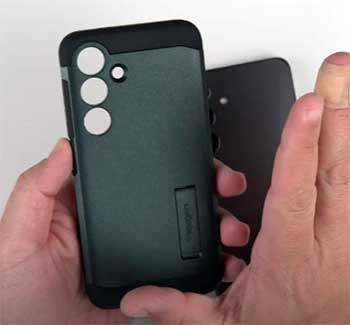
Here’s where you come in. I’ve learned it’s about your needs.
If you’re like me on a rugged day—hiking, working outdoors, or just super clumsy—the Otterbox Defender’s extreme protection is your ally.
It’s bulky, but I sleep better knowing my phone’s safe.
If your life’s more like my typical routine—desk work, errands, the occasional drop—the Spigen Tough Armor balances protection and convenience.
I love its slimmer feel and kickstand. Think about your day:
Do you need a tank or a sleek shield? You can’t go wrong, but your choice matters.
Also Read: Comparison of ZAGG And Spigen Screen Protectors.
Frequently Asked Questions (FAQ)
Yes, the Spigen Tough Armor meets MIL-STD 810G-51.6 standards, meaning it’s tested for drops and durability, making it a solid choice for everyday protection.
The Rugged Armor is slimmer and more flexible, with a single TPU layer for moderate protection. I find the Tough Armor tougher, with a dual-layer design (TPU and polycarbonate) for better shock absorption.
It’s among the top, with multi-layer construction and military-grade testing. I’ve seen it survive extreme drops, but some brands like UAG or the Otterbox Defender Pro might edge it out for specific scenarios.
In my experience, the Tough Armor is Spigen’s toughest, thanks to its dual-layer build and air cushion technology, handling drops better than slimmer options like the Rugged Armor or Ultra Hybrid.
Wrapping Up
After testing both the Otterbox Defender and Spigen Tough Armor, I’ve seen their strengths firsthand. The Defender’s rugged, multi-layer design saved my phone from brutal drops, perfect if you face tough conditions or constant mishaps.
The Tough Armor impressed me with its balance—solid protection, a sleek profile, and a handy kickstand for daily use. You’ve got to weigh your lifestyle: extreme protection or practical style?
I’ve shared my drops, my wins, and my gripes to help you choose. Pick the Otterbox Defender for a fortress, or the Spigen Tough Armor for a versatile shield—your phone’s safety depends on it!
